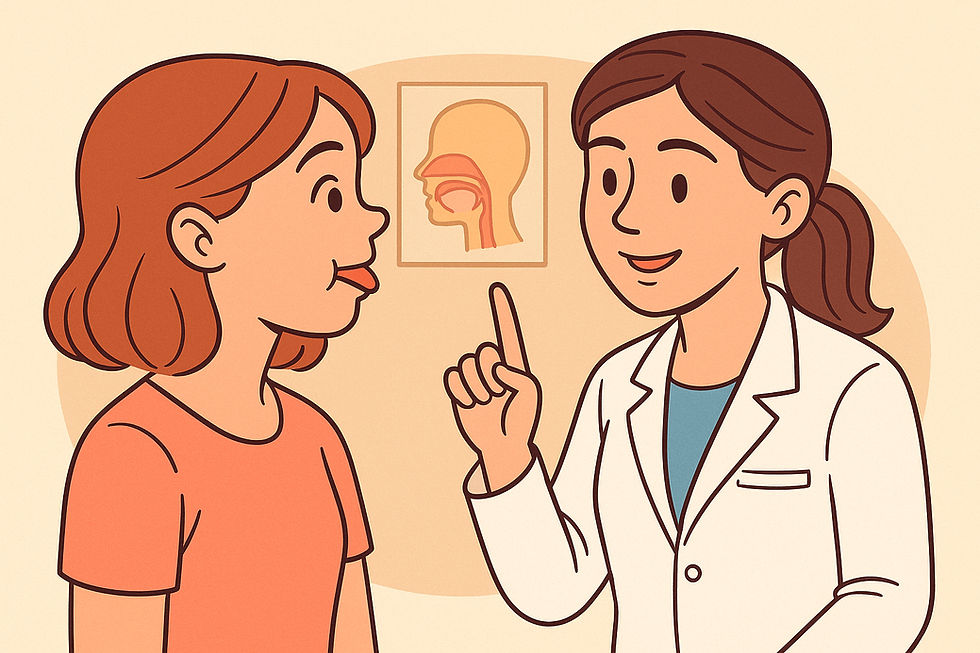How Tongue Posture Influences Overall Posture
- Steph Botts
- Jul 27
- 2 min read

Most people don’t realize that tongue posture—specifically where your tongue naturally rests—can influence not just oral health but your entire musculoskeletal alignment. In Episode 60 of Straight Up With Steph, myofunctional therapist Kimmie explains how retraining tongue posture affects head position, neck tension, and spinal balance.
In fact, I didn't realize I personally have a mid-tongue restriction, which is affecting my head position, neck and back tension, and overall posture. I even have an appointment scheduled with Kimmie to correct it!
Why Tongue Posture Matters to Your Posture
When the tongue rests low in the mouth (e.g., near the floor or teeth), the head often shifts forward to open the airway. That shift can lead to chronic neck and shoulder tension.
A properly elevated tongue—resting gently against the roof of the mouth—supports cervical spine alignment, reduces forward-head tilt, and promotes more balanced posture overall.
Watch the full video here:
Recommended Exercises from Kimmie
Kimmie outlines several myofunctional exercises designed to reposition the tongue and reinforce postural alignment (always do these under the supervision of a trained specialist):
Tongue Pop / Clicks
Create suction between the tongue and palate, then quickly “pop” it off—making a clicking sound.
Repeat 10–15 times, 2–3 times per day.
Sustained Palatal Hold
Rest the entire tongue flat against the roof of the mouth (textured side), tip just behind the upper front teeth.
Hold gentle suction for 20–30 seconds. Repeat 5–10 times.
Nasal Breathing with Tongue Suction
Breathe slowly through your nose while maintaining light tongue suction on the palate.
Practice for 1–2 minutes, 2–3 times per day.
These exercises strengthen tongue and facial muscles, promote nasal breathing, and gradually train better postural alignment in the neck and upper back.
How These Exercises Improve Posture
Activates proper muscle chains: When the tongue lifts, it connects to surrounding muscles in jaw, neck, and shoulders, promoting overall stabilization.
Encourages proper head carriage: With tongue support, the head can rest more naturally atop the cervical spine—reducing forward tilt and shoulder strain.
Supports ergonomic posture: Particularly helpful for desk-bound individuals and dental clinicians, better tongue posture can counteract slumping and forward-leaning postures developed during the day.
Listen to this episode here:
If you’ve ever noticed neck or shoulder tension, struggled with forward head posture, or wondered if your tongue could be playing a role, this episode is for you. Kimmie shares how tongue posture connects to whole-body alignment—and why working with a qualified myofunctional therapist is key to getting the best results.
Check out the full episode to learn more about how tongue posture can improve your breathing, posture, and overall well-being!











Comments